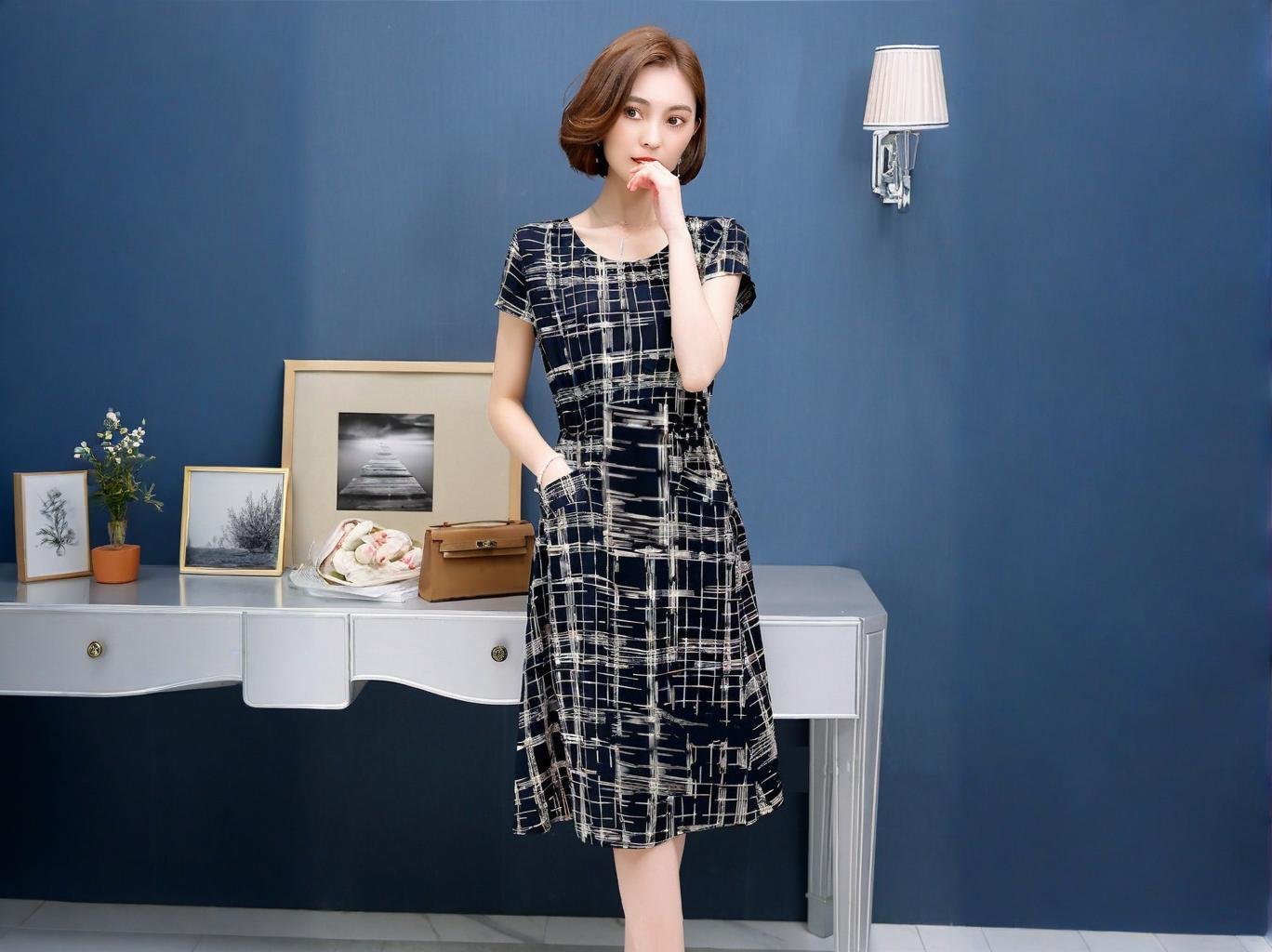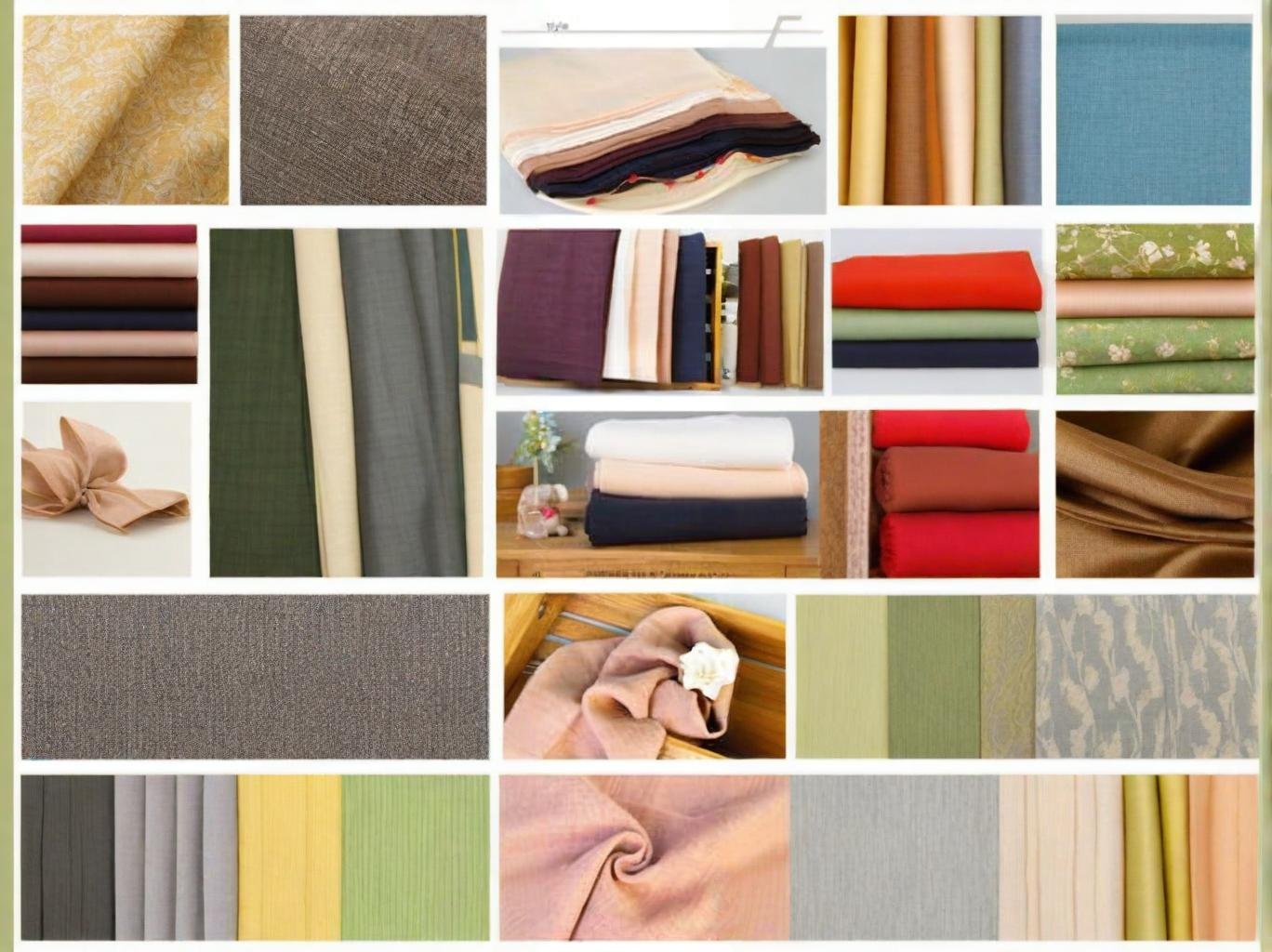What Is The Difference Between Mulberry Silk And Real Silk?

Silk is often marketed with vague or confusing labels: “100% silk,” “natural silk,” “mulberry silk,” “real silk.” For sourcing managers, brand owners, and fabric developers, knowing the difference isn’t just academic—it affects quality, cost, and brand trust. As more buyers move toward premium, traceable materials, distinguishing between mulberry silk and so-called “real silk” is more critical than ever.
The key difference is that mulberry silk refers to silk made exclusively from Bombyx mori silkworms fed only mulberry leaves, making it the finest and most consistent type of real silk. “Real silk” is a general term and can include other natural silks like Tussar, Eri, or Muga—each with different textures, costs, and uses.
If your business values ultra-soft texture, uniform weave, and predictable dye performance, mulberry silk is usually the top choice. But if you’re targeting eco-conscious consumers or artisanal aesthetics, other types of real silk may align better with your product goals. In the following sections, we’ll break down the technical, commercial, and sensory differences that matter most to B2B buyers.
Let’s begin with a story: One luxury bedding brand in Europe unknowingly marketed “real silk” pillowcases—made from Tussar silk—as mulberry silk. When customer complaints rolled in about coarseness and yellowing, they discovered the importance of this distinction the hard way. Their sourcing pivot back to certified mulberry silk boosted returns—and brand reputation. Here’s how to avoid that same mistake.
1. What Is Mulberry Silk and How Is It Made?
Mulberry silk is a premium-grade natural silk produced by Bombyx mori silkworms that are exclusively fed a diet of mulberry leaves. This controlled rearing process results in long, uniform silk fibers known for their incredible softness, strength, sheen, and dye absorption. It’s the most widely used silk in the world and accounts for around 85% of global silk production.
The Science and Craft of Mulberry Silk
Mulberry Silk Production Process Overview
| Stage | Description |
|---|---|
| Sericulture | Silkworms (Bombyx mori) are raised on a diet of mulberry leaves |
| Cocoon Formation | Each worm spins a single thread up to 900 meters long |
| Harvesting | Cocoons are boiled or steamed to kill the pupae and soften fibers |
| Reeling | Long fibers are extracted and twisted into silk yarn |
| Weaving | Yarn is woven into various fabrics like charmeuse, twill, habotai |
| Finishing | Fabrics may be dyed, printed, or sandwashed for desired effect |
Why It’s Preferred:
- Fiber Uniformity: Long filament structure reduces slubs and allows tighter weaving
- Luster: Smooth surface reflects light beautifully
- Softness: Fine diameter (1.0–1.5 denier)
- Hypoallergenic: Protein structure naturally resists dust mites and mold
- Dyeability: Accepts dye deeply and evenly, ideal for fashion and bedding
Market Insight:
According to the International Sericultural Commission, mulberry silk is used in over 90% of high-end silk apparel, accessories, and home goods, especially in exports to the U.S., EU, and Japan.
Case Snapshot:
A U.S. sleepwear brand shifted from Tussar to mulberry silk for its mainline collection. Customer returns dropped by 27%, and average order values increased by 15% due to improved perceived luxury.
2. What Does “Real Silk” Mean in the Textile Industry?
“Real silk” is a generic industry term referring to any silk that originates from natural protein fibers produced by silkworms. While mulberry silk is the most refined, real silk can also include Tussar (wild silk), Eri (peace silk), and Muga (golden silk)—each with its own characteristics. The term is often used in marketing to imply authenticity, but it doesn’t specify the silk type or quality.
Varieties Included Under “Real Silk”
Common Types of Real Silk
| Silk Type | Silkworm Species / Source | Appearance | Texture | Common Applications |
|---|---|---|---|---|
| Mulberry | Bombyx mori | Bright white, shiny | Soft, smooth | Lingerie, blouses, bedding, scarves |
| Tussar | Antheraea mylitta | Beige/golden | Coarse, textured | Ethnic wear, eco-textiles, home goods |
| Eri | Philosamia ricini | Off-white to brick | Wooly, matte | Vegan fashion, scarves, stoles |
| Muga | Antheraea assamensis | Naturally golden | Firm, rich texture | Royal saris, heirloom garments |
Understanding the Differences:
- Tussar silk is more affordable but less soft and less colorfast.
- Eri silk is cruelty-free (the worm is not killed during harvesting) and is preferred in vegan or peace silk applications.
- Muga silk is extremely rare and exclusive to India, valued for its natural golden sheen and durability.
Buyer Warning:
Some suppliers label cheaper silk varieties as “real silk” to imply premium quality—when in fact, they are not mulberry silk. Without clear labeling or certification, this can mislead both buyers and end users.
Case in Point:
A Canadian brand ordered “real silk” scarves from an unverified supplier. They received Tussar silk despite requesting mulberry. The final product had visible texture differences, color inconsistency, and customer complaints. After switching to OEKO-TEX certified mulberry silk, their reorder volume increased by 34%.
3. Is All Real Silk Made from Mulberry Silk?
No, not all real silk is made from mulberry silk. While mulberry silk is the most refined and widely produced variety, real silk can also be made from other silkworm species like Antheraea mylitta (Tussar), Antheraea assamensis (Muga), and Philosamia ricini (Eri). These varieties are all classified as “real” because they are naturally secreted protein fibers—but their quality, texture, and production processes differ significantly.
Real Silk Categories by Origin
Key Silkworm Species and Their Silk Outputs
| Silkworm Type | Silk Variety | Geographic Origin | Cultivation Type | Rarity |
|---|---|---|---|---|
| Bombyx mori | Mulberry | China, India, Vietnam | Domesticated farming | Common |
| Antheraea mylitta | Tussar | India (Central, East) | Wild forest areas | Moderate |
| Antheraea assamensis | Muga | Assam, India | Semi-domesticated | Very rare |
| Philosamia ricini | Eri | India (Assam, Meghalaya) | Domesticated, vegan | Moderate |
Misconceptions to Avoid:
- “Real silk” is a broad term, often misused in product labeling. It includes silk from multiple species—not just Bombyx mori.
- Mulberry silk is the only variety with long, smooth filament fibers, making it ideal for fine weaving and dyeing.
- Some “real silk” products are wild silk, which may have more slubs and color variation.
Real-World Application:
A German menswear brand requested “real silk twill” for custom ties. The initial shipment, labeled as “real silk,” turned out to be Tussar, which had uneven texture and off-white tones. Upon clarifying their specs to “mulberry silk, 14mm, filament grade,” they received fabric consistent with their quality expectations.
Buyer Takeaway:
Always specify the exact type of silk when placing orders. Asking for “real silk” is too broad—it can result in quality mismatches, color inconsistencies, or durability issues in production.
4. What Are the Key Differences in Fiber Quality and Texture?
The main differences between mulberry silk and other real silks lie in fiber length, texture, sheen, weave ability, and softness. Mulberry silk is smoother, longer, and more uniform, making it ideal for fine apparel and bedding. Other silks (like Tussar, Eri, or Muga) tend to have shorter fibers, natural color variation, and coarser textures.
Comparing Fiber Properties by Silk Type
Side-by-Side Comparison: Mulberry vs. Other Real Silks
| Feature | Mulberry Silk | Tussar Silk | Eri Silk | Muga Silk |
|---|---|---|---|---|
| Fiber Length | Long filament (600–900m) | Medium staple (\~200m) | Short staple (\~150m) | Medium staple (\~250m) |
| Surface Texture | Ultra smooth, glossy | Slightly coarse, slubbed | Wooly, matte | Rich, firm texture |
| Color (natural) | Pure white | Beige to golden brown | Cream to reddish | Deep golden yellow |
| Shine & Luster | High | Moderate | Low | Very high (natural shimmer) |
| Touch & Feel | Soft, fluid, cool to touch | Crisp, slightly rough | Warm, soft like cotton wool | Smooth, dense |
| Dye Absorption | Excellent | Accepts dyes moderately | Dyes well but unevenly | Naturally dyed, limited color |
| Price Range (USD/m) | \$12–\$30 | \$6–\$18 | \$8–\$20 | \$30–\$100+ (luxury only) |
Sensory Test:
If you rub mulberry silk between your fingers, it feels like cool water. Tussar silk may feel slightly crisp or even grainy. Eri has a cottony, textured feel that absorbs less light. Muga silk is naturally heavier and has an almost metallic shimmer.
Industry Example:
A luxury scarf brand in Paris commissioned 2,000 pieces made from mulberry silk twill due to its soft drape and consistent dye hold. Their vegan collection, however, used Eri silk, promoting its cruelty-free sourcing and matte texture. Both collections succeeded—but served distinct customer segments.
Critically Consider:
- Are you selling sensory luxury (then choose mulberry)?
- Do you want an artisan, natural, or vegan appeal (then Eri or Tussar may suit better)?
- Will the silk be printed? Only mulberry silk consistently holds high-definition prints.
5. How Do Mulberry Silk and Other Real Silks Compare in Durability?
Mulberry silk is generally more durable than other real silks due to its long filament fibers, consistent structure, and high tensile strength. However, durability can also depend on weave type, fabric weight (GSM), and post-processing. Wild silks like Tussar and Muga are coarser and more rigid, making them naturally resistant to wear—but less soft and elastic.
Silk Durability by Type
Tensile Strength and Resistance Overview
| Silk Type | Average Tensile Strength (MPa) | Abrasion Resistance | Shrinkage Resistance | Colorfastness |
|---|---|---|---|---|
| Mulberry | 300–400 | Moderate | High (with preshrunk finish) | Excellent (with reactive dye) |
| Tussar | 250–300 | High | Moderate | Fair |
| Eri | 200–280 | Low to Moderate | High (due to staple fiber blend) | Good (with natural dyes) |
| Muga | 350–420 | Very High | High | Excellent (natural golden color) |
What Affects Durability?
- Filament vs. Staple: Long filaments in mulberry silk mean fewer joins and breaks.
- Weave Structure: Twill and satin weaves offer better durability than plain weave.
- GSM (grams per square meter): Heavier silk tends to last longer in high-use categories.
- Dyeing Technique: Low-quality dyes can degrade silk fibers over time.
Application-Specific Durability:
| Application | Best Silk Type | Reason |
|---|---|---|
| Luxury sleepwear | Mulberry | Gentle on skin, soft drape, resists fraying |
| Drapery & upholstery | Muga or Tussar | Coarse, high GSM, natural thickness |
| Scarves & accessories | Mulberry or Eri | Mulberry for print; Eri for texture and ethics |
| Traditional garments | Tussar or Muga | Rustic texture, cultural authenticity, long wear life |
Case Example:
A boutique bedding manufacturer in the U.S. tested pillowcases in 19mm mulberry charmeuse and Eri silk twill. After 40 washes:
- Mulberry retained 90% of its luster and shape
- Eri retained 65%, showing softening but slight color fading
This informed their decision to use mulberry silk for their signature line, and Eri silk for a seasonal vegan series.
6. Which Silk Types Are Best for Luxury Apparel, Bedding, and Accessories?
Mulberry silk is the top choice for luxury apparel and bedding due to its softness, sheen, and excellent drape. However, other real silks like Eri, Muga, and Tussar offer distinct benefits for eco-conscious, traditional, or textured product lines. The ideal silk depends on your target market, price point, brand values, and end-use requirements.
Matching Silk Types to Product Categories
Best Silk by Product Category
| Product Type | Recommended Silk Type(s) | Justification |
|---|---|---|
| Women’s dresses | Mulberry (charmeuse or twill) | Smooth drape, excellent print quality |
| Men’s ties | Mulberry (twill), Muga | Crisp structure, rich sheen |
| Scarves | Mulberry for softness, Eri for matte look | Differentiate collections by finish and audience |
| Bedsheets & pillowcases | Mulberry (19–25mm) | Hypoallergenic, breathable, luxurious feel |
| Robes & sleepwear | Mulberry or Eri | Eri for vegan lines, mulberry for silky comfort |
| Ethnic wear | Tussar, Muga | Texture, cultural association, durability |
| Home décor | Tussar, Muga, heavy Eri | Weight, coarse texture, natural colors |
Luxury Market Considerations:
- Mulberry is the standard for high-end fashion houses. It prints well, dyes evenly, and can be woven into everything from chiffon to duchess satin.
- Muga, although rare and expensive, is favored in exclusive bridalwear and heirloom saris due to its naturally golden tone.
- Eri silk is becoming popular among sustainable brands, especially in Europe and Japan, where vegan and cruelty-free fashion is growing.
Real-Life Scenario:
A Danish loungewear brand used 22mm mulberry silk for robes and Eri silk for scarves. Customers appreciated the contrast—one product was sensually luxurious, the other ethically grounded. Their dual-fabric strategy created buzz and increased repeat sales by 24% in Q1 2024.
Strategic Thinking for Buyers:
- Do your customers prioritize softness and sheen (go mulberry)?
- Are you building an ethical, slow-fashion brand (try Eri or Tussar)?
- Do you need a distinctive texture or golden color (look at Muga)?
7. Are There Price Differences Between Mulberry Silk and Other Silks?
Yes, there are significant price differences between mulberry silk and other types of real silk—mainly due to production methods, fiber uniformity, regional availability, and market demand. Mulberry silk is generally more affordable than exotic silks like Muga, yet more expensive than rougher wild silks like Tussar or Eri on a per-meter basis.
Silk Pricing Dynamics
Average Market Price Range (2024 Estimate)
| Silk Type | Price (USD per Meter, FOB) | Factors Affecting Price |
|---|---|---|
| Mulberry | \$10–\$30 | Filament quality, weave type, dye process |
| Tussar | \$6–\$15 | Natural texture, shorter staple, handloom costs |
| Eri | \$8–\$20 | Vegan appeal, slow production, limited demand |
| Muga | \$30–\$100+ | Rarity, handmade exclusivity, geographic limit |
Influencing Price Drivers:
- Processing Complexity: Mulberry silk reeling is highly efficient; Muga and Eri involve time-consuming manual steps.
- Certifications: OEKO-TEX and GOTS certifications can increase base cost by 10–15%.
- Import Tariffs: EU, US, and Japan may apply different duties based on origin or HS code classification.
Price vs. Value:
While mulberry silk often delivers the best price-to-performance ratio, Tussar or Eri silk may offer better storytelling and niche appeal, especially in eco-luxury segments.
Buyer Tip:
Negotiate based on:
- GSM (fabric weight)
- Minimum order quantity (MOQ)
- Dyeing/finishing method (reactive vs acid dye)
- Certification coverage (lab test reports help justify cost)
Practical Case:
A Canada-based fashion house compared 19mm mulberry charmeuse (\$16/m) with Eri silk twill (\$13/m). Though Eri was slightly cheaper, the additional costs for stabilizing shrinkage and achieving deep colors made mulberry the better choice for their printed nightwear.
8. How Can B2B Buyers Verify the Authenticity of Mulberry vs. Other Silks?
To verify whether silk is truly mulberry (and not a cheaper substitute), B2B buyers should use a combination of certification checks, physical testing, fiber analysis, and supplier documentation. Verifying silk type at the procurement stage reduces customer returns, brand risk, and quality inconsistencies.
Methods to Authenticate Silk Type
Recommended Verification Steps for Buyers
| Method | What It Confirms | Tool/Document |
|---|---|---|
| Certification Check | OEKO-TEX, GOTS, Silk Mark India | Official logos, database validation |
| Microscopic Fiber Testing | Fiber diameter and filament structure | Textile lab analysis |
| Burn Test (lab-controlled) | Smell and ash of protein fiber | Fine odor = mulberry; grainy = wild |
| Touch Test | Softness and slipperiness | Mulberry = water-like, Eri = matte |
| Supplier Transparency | Country of origin, rearing method | BOM sheets, video walk-throughs |
| Print Uniformity Check | Dye depth and consistency | Mulberry prints sharp, Tussar fades |
How Certification Protects You:
- OEKO-TEX® Standard 100: Ensures material safety and origin compliance
- GOTS: Applies to certified organic mulberry silk and ethical practices
- Silk Mark India: Assures traditional Indian silk authenticity
Example:
A Middle Eastern importer sourcing 5,000 meters of “mulberry silk twill” had samples lab-tested at SGS. Results showed a blended yarn of mulberry and viscose. They switched to an OEKO-TEX certified supplier and avoided a costly claim from a luxury retailer client.
Making the Right Silk Choice for Your Brand
Choosing between mulberry silk and other forms of real silk is about more than fabric—it’s about aligning quality, ethics, texture, and cost with your brand’s promise.
- Mulberry silk is best for consistent, luxurious, and versatile performance.
- Tussar, Muga, and Eri silks are ideal for brands with an eco-conscious, cultural, or artisan-driven message.
- Understanding these differences helps you source smarter, reduce return rates, and position your products effectively in the global market.
Work with SzoneierFabrics — Your Silk Customization Partner in China
At SzoneierFabrics, we’ve helped hundreds of international clients navigate the complexities of silk sourcing. Whether you need OEKO-TEX certified mulberry silk, cruelty-free Eri silk, or custom-dyed Tussar blends, we provide:
✅ 100% quality assurance ✅ Free design service & sample support ✅ Low MOQ starting at 50 meters ✅ Short lead times (7–15 days) ✅ Full documentation & lab testing
Can't find the answers?
No worries, please contact us and we will answer all the questions you have during the whole process of bag customization.
Make A Sample First?
If you have your own artwork, logo design files, or just an idea,please provide details about your project requirements, including preferred fabric, color, and customization options,we’re excited to assist you in bringing your bespoke bag designs to life through our sample production process.



